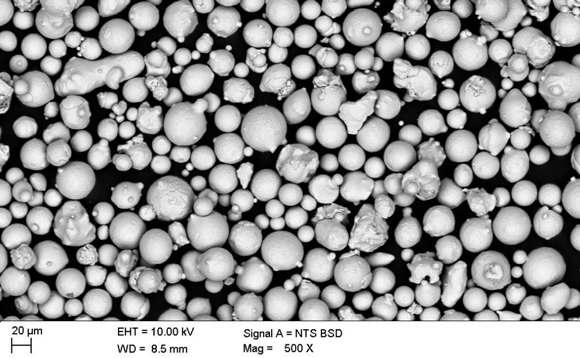VDM Metals adds new Powder 59 material for demanding applications
January 19, 2022

VDM Metals GmbH, Werdohl, Germany, has announced VDM® Powder 59 as the latest addition to the Alloy 59 product line. Alloy 59 is one of the most frequently used nickel alloys for demanding applications in corrosive environments. In recent years, the fields of application of the alloy grew steadily, as new processes have been developed in the chemical and petrochemical industries.
With raw materials and energy sources becoming scarcer and more costly, but also due to ever more stringent environmental regulations, the demands on process parameters have increased. This has led to high operating temperatures, pressures and concentration of process media that can only be safely managed by high-alloy materials. VDM Powder 59 has particularly low concentrations of carbon and silicon and is characterised by excellent corrosion resistance.
Dr Christina Schmidt, Head of Powder Production, Research and Development, at VDM Metals, explained, “All elements of analysis are within the standard chemical composition of Alloy 59. The material is versatile in use in many chemical processes with oxidising and reducing media. Furthermore, this alloy is more resilient against localised attack in chloride containing media due to its high nickel, chromium and molybdenum concentrations.”
“Additionally, based on a balanced chemical composition with a focus on workability, the powder shows excellent printing properties, which makes it possible to realize very complicated geometries without running into risks of crack formation,” she continued. “First results of different corrosion tests show comparable results of printed parts with conventional produced material.”
Alloy 59 was initially developed for use in chemical processes and environmental technologies due to this material being able to work in the aggressive areas where nickel alloys of the so-called C series (for example well-known Alloy C-276) differentiate from a large number of commercial nickel alloys, that are not resistant against prevailing conditions. The C series alloys typically exhibit the contents of 55 to 66 wt.% nickel, 16 to 23 wt.% chromium and 13 to 19 wt.% molybdenum. The high content of molybdenum gives them excellent corrosion resistance under reducing corrosive conditions and the high chromium content in oxidising media. Additions of tungsten may have an additional positive effect on the corrosion resistance, but they also impair the thermal stability.
Dr Schmidt added, “In the development of Alloy 59, VDM Metals further exploited this direction. The chromium content was raised by 7 wt.% to a content of 23 wt.% compared to the older C series, tungsten left out and the iron content reduced to approximately 1 wt.%. Molybdenum was kept at a high level of about 16 wt.%.”
This composition is said to result in a good resistance in reducing media due to the high molybdenum content and simultaneously a considerably improved resistance in oxidising media due to the significantly raised chromium content. In addition, the material features improved resistance to intergranular corrosion. Another important aspect is outstanding workability, in particular weldability. Alloy 59 is widely used not only for producing complex constructions but also for service and maintenance tasks directly in the field.
Dr Schmidt is confident, that the new powder variant of the alloy will be a top seller in the future and concluded, ”From a technical point-of-view, we made sure that everything was ready for use in Additive Manufacturing.”
















